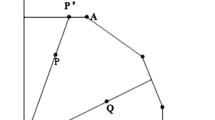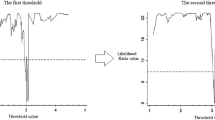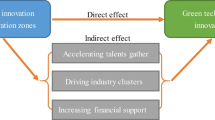Abstract
The heterogeneity can greatly influence the green innovative development of industrial enterprises. Based on the stochastic frontier analysis model of heterogeneity, this paper measures the green innovative efficiency of industrial enterprises in China for the time period of 2008 to 2017, and concludes the following results: (a) in the production function estimation, the R&D expenditure of industrial enterprises is the main positive factor in influencing green innovation, while the energy consumption the main negative factor. The effects of R&D talents and environment quality are not obvious at both stages. (b) The overall green innovation efficiency of industrial enterprises is only 0.2981 at R&D stage with an efficiency loss of 0.7019, and the residual efficiency of green innovation is 0.9966 with persistent efficiency as 0.2991. The overall green innovation efficiency of industrial enterprises is only 0.3930 at new product sales stage with an efficiency loss of 0.607, and the residual efficiency of green innovation is 0.8196 with persistent efficiency as 0.4783. (c) In the sample period, there appears to be an apparent decreasing of green innovative efficiency level from R&D stage to new product sales stage. Besides, the distribution of both overall efficiency and persistent efficiency tend to disperse, and there are great differences among years which are expanded at different stages. (d) Certain “club convergence” exists in overall efficiency and persistent efficiency of green innovation. The structural problem at R&D stage is the main factor in influencing the green innovation overall efficiency. The residual factors such as time effect at new product sales stage affect new product transformation. In order to increase green innovation efficiency, considering development level of selves, regions can establish a “club” to set up an efficient and sharable patent transfer platform, and reduce new product transformation loss.




Similar content being viewed by others
Data availability
The datasets used and/or analyzed during the current study are available from the corresponding author on reasonable request.
References
Agasisti T, Gralka S (2019) The transient and persistent efficiency of Italian and German universities: a stochastic frontier analysis. Appl Econ 51(46):5012–5030. https://doi.org/10.1080/00036846.2019.1606409
Alvarez A, Amsler C, Orea L, Peter S (2006) Interpreting and testing the scaling property in models where inefficiency depends on firm characteristics. J Prod Anal 25(3):201–212. https://doi.org/10.1007/s11123-006-7639-3
Battese GE, Coelli TJ (1992) Frontier production functions, technical efficiency and panel data: with application to paddy farmers in India. J Prod Anal 3(1-2):153–169. https://doi.org/10.1007/978-94-017-1923-0_10
Bi GB, Song W, Zhou P, Liang L (2014) Does environmental regulation affect energy efficiency in China's thermal power generation? Empirical evidence from a slacks-based DEA model. Energy Policy 66(C):537–546. https://doi.org/10.1016/j.enpol.2013.10.056
Carrión-Flores CE, Innes R (2010) Environmental innovation and environmental performance. J Environ Econ Manag 59(1):27–42. https://doi.org/10.1016/j.jeem.2009.05.003
Caudill SB, Ford JM (1993) Biases in frontier estimation due to heteroscedasticity. Econ Lett 41(1):17–20. https://doi.org/10.1016/0165-1765(93)90104-K
Caudill SB, Ford JM, Gropper DM (1995) Frontier estimation and firm-specific inefficiency measures in the presence of heteroscedasticity. J Bus Econ Stat 13(1):105–111. https://doi.org/10.1080/07350015.1995.10524583
Costantini V, Mazzanti M (2012) On the green and innovative side of trade competitiveness? The impact of environmental policies and innovation on EU exports. Res Policy 41(1):132–153. https://doi.org/10.1016/j.respol.2011.08.004
Du K (2017) Econometric convergence test and club clustering using Stata. Stata J 17(4):882–900. https://doi.org/10.1177/1536867X1701700407
Eiadat Y, Kelly A, Roche F, Eyadat H (2008) Green and competitive? An empirical test of the mediating role of environmental innovation strategy. J World Bus 43(2):131–145. https://doi.org/10.1016/j.jwb.2007.11.012
Feichtinger G, Lambertini L, Leitmann G, Wrzaczek S (2016) R&D for green technologies in a dynamic oligopoly: Schumpeter, Arrow and inverted-U’s. Eur J Oper Res 249(3):1131–1138. https://doi.org/10.1016/j.ejor.2015.09.025
Ferreira JJ, Fernandes C, Ratten V (2018) Environmental-related patent technology transfer effectiveness: A comparison between Portugal and Australia using OECD data. World J Entrep Manag 14(3):206–221. https://doi.org/10.1108/WJEMSD-10-2017-0079
Fried HO, Schmidt SS, Yaisawarng S (1999) Incorporating the operating environment into a nonparametric measure of technical efficiency. J Prod Anal 12(3):249–267. https://doi.org/10.1023/A:1007800306752
Greene W (2005) Reconsidering heterogeneity in panel data estimators of the stochastic frontier model. J Econ 126(2):269–303. https://doi.org/10.1016/j.jeconom.2004.05.003
Hu S, Liu S (2019) Do the coupling effects of environmental regulation and R&D subsidies work in the development of green innovation? Empirical evidence from China. Clean Techn Environ Policy 21(9):1739–1749. https://doi.org/10.1007/s10098-019-01745-6
Jiang Q, Yang S, Tang P, Yang SW (2020) Promoting the polluters? The competing objectives of energy efficiency, pollutant emissions, and economic performance in Chinese municipalities. Energy Res Soc Sci 61:101365. https://doi.org/10.1016/j.erss.2019.101365
Kodde DA, Palm FC (1986) Wald criteria for jointly testing equality and inequality restrictions. Econometrica 54(5):1243–1248. https://doi.org/10.2307/1912331
Kumbhakar SC (1990) Production frontiers, panel data, and time-varying technical inefficiency. J Econ 46(1-2):201–211. https://doi.org/10.1016/0304-4076(90)90055-X
Kumbhakar SC, Heshmati A (1995) Efficiency measurement in Swedish dairy farms: an application of rotating panel data, 1976–88. Am J Agric Econ 77(3):660–674. https://doi.org/10.2307/1243233
Kumbhakar SC, Lien G, Hardaker JB (2014) Technical efficiency in competing panel data models: a study of Norwegian grain farming. J Prod Anal 41(2):321–337. https://doi.org/10.1007/s11123-012-0303-1
Kumbhakar SC, Wang D (2007) Economic reforms, efficiency and productivity in Chinese banking. J Regul Econ 32(2):105–129. https://doi.org/10.1007/s11149-007-9028-x
Kuosmanen T (2012) Stochastic semi-nonparametric frontier estimation of electricity distribution networks: Application of the StoNED method in the Finnish regulatory model. Energy Econ 34(6):2189–2199. https://doi.org/10.1016/j.eneco.2012.03.005
Liu WB, Zhou ZB, Ma CQ, Liu DB, Shen WF (2015) Two-stage DEA models with undesirable input-intermediate-outputs. Omega 56:74–87. https://doi.org/10.1016/j.omega.2015.03.009
Manevska-Tasevska G, Hansson H, Labajova K (2017) Impact of Management Practices on Persistent and Residual Technical Efficiency - a Study of Swedish pig Farming. Manag Decis Econ 38(6):890–905. https://doi.org/10.1002/mde.2823
National Bureau of Statistics, China (2018a) China statistical yearbook (2003–2018). China Statistics Press, Beijing
National Bureau of Statistics, China (2018b) China regional statistical yearbook (2003–2018). China Statistics Press, Beijing
Orea L, Kumbhakar SC (2004) Efficiency measurement using a latent class stochastic frontier model. Empir Econ 29(1):169–183. https://doi.org/10.1007/s00181-003-0184-2
Peng JC, Xiao JZ, Zhang L, Wang T (2020) The impact of China's ‘Atmosphere Ten Articles’ policy on total factor productivity of energy exploitation: Empirical evidence using synthetic control methods. Res Policy 65:101544. https://doi.org/10.1016/j.resourpol.2019.101544
Peng JC, Xiao JZ, Wen L, Zhang L (2019a) Energy industry investment influences total factor productivity of energy exploitation: A biased technical change analysis. J Clean Prod 237:237. https://doi.org/10.1016/j.jclepro.2019.117847
Peng JC, Xu RR, Fu LN, Yi M, Xu YD (2019b) The Evolutionary Law of Green Innovation Efficiency of Industrial Enterprises in the Yangtze River Economic Belt. China Environ Sci 39(11):4886–4900. https://doi.org/10.19674/j.cnki.issn1000-6923.2019.0570
Reifschneider D, Stevenson R (1991) Systematic departures from the frontier: a framework for the analysis of firm inefficiency. Int Econ Rev 32:715–723. https://doi.org/10.2307/2527115
Schmidt P, Sickles RC (1984) Production frontiers and panel data. J Bus Econ Stat 2(4):367–374. https://doi.org/10.2307/1391278
Shao S, Yang Z, Yang L (2019) Can China’s Energy Intensity Constraint Policy Promote Total Factor Energy Efficiency? Evidence from the Industrial Sector. Energy J 40(4):101–127. https://doi.org/10.5547/01956574.40.4.ssha
Simar L, Wilson PW (2007) Estimation and inference in two-stage, semi-parametric models of production processes. J Econ 136(1):31–64. https://doi.org/10.1016/j.jeconom.2005.07.009
Wang H, Ho C (2010) Estimating fixed-effect panel stochastic frontier models by model transformation. J Econ 157(2):286–296. https://doi.org/10.1016/j.jeconom.2009.12.006
Wang H, Schmidt P (2002) One-step and two-step estimation of the effects of exogenous variables on technical efficiency levels. J Prod Anal 18(2):129–144. https://doi.org/10.1023/A:1016565719882
Worthington AC (2000) Cost efficiency in Australian local government: a comparative analysis of mathematical programming and econometrical approaches. Financ Account Manag 16(3):201–223. https://doi.org/10.1111/1468-0408.00105
Yi M, Wang Y, Sheng M, Sharp B (2020) Effects of heterogeneous technological progress on haze pollution: Evidence from China. Ecol Econ 169:106533. https://doi.org/10.1016/j.ecolecon.2019.106533
Zhou Q, Zhang X, Shao Q (2019) The non-linear effect of environmental regulation on haze pollution: Empirical evidence for 277 Chinese cities during 2002–2010. J Environ Manag 248:109274. https://doi.org/10.1016/j.jenvman.2019.109274
Author information
Authors and Affiliations
Contributions
Xu, YD, Zhang, Y and Lu, Y conceptualized the study. Xu, YD and Chen JY collected the data; Xu, YD, Zhang, Y and Chen JY analyzed the data, Zhang Y and Lu Y wrote the manuscript.
Corresponding author
Ethics declarations
Ethics approval and consent to participate
Not applicable.
Consent for publication
Not applicable.
Conflict of interest
The authors declare no competing interests.
Additional information
Responsible Editor: Ilhan Ozturk
Publisher’s note
Springer Nature remains neutral with regard to jurisdictional claims in published maps and institutional affiliations.
Rights and permissions
About this article
Cite this article
Xu, ., Zhang, Y., Lu, Y. et al. The evolution rule of green innovation efficiency and its convergence of industrial enterprises in China. Environ Sci Pollut Res 29, 2894–2910 (2022). https://doi.org/10.1007/s11356-021-15885-0
Received:
Accepted:
Published:
Issue Date:
DOI: https://doi.org/10.1007/s11356-021-15885-0




